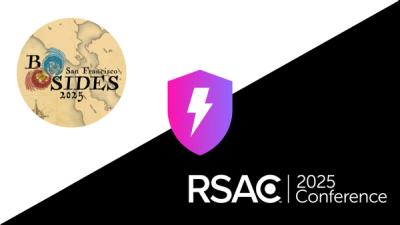
Security Fundamentals
Obfuscation 101: Unmasking the Tricks Behind Malicious Code
Attackers use obfuscation to hide malware in open source packages. Learn how to spot these techniques across npm, PyPI, Maven, and more.





Use W&B to build better models faster. Track and visualize all the pieces of your machine learning pipeline, from datasets to production machine learning models. Get started with W&B today, sign up for an account!
See the W&B Developer Guide and API Reference Guide for a full technical description of the W&B platform.
Get started with W&B in four steps:
First, sign up for a W&B account.
Second, install the W&B SDK with pip. Navigate to your terminal and type the following command:
pip install wandb
wandb.login()
import wandb
# Start a W&B Run with wandb.init
run = wandb.init(project="my_first_project")
# Save model inputs and hyperparameters in a wandb.config object
config = run.config
config.learning_rate = 0.01
# Model training code here ...
# Log metrics over time to visualize performance with wandb.log
for i in range(10):
run.log({"loss": ...})
# Mark the run as finished, and finish uploading all data
run.finish()
For example, if the preceding code was stored in a script called train.py:
python train.py
You will see a URL in your terminal logs when your script starts and finishes. Data is staged locally in a directory named wandb relative to your script. Navigate to the W&B App to view a dashboard of your first W&B Experiment. Use the W&B App to compare multiple experiments in a unified place, dive into the results of a single run, and much more!
Use your favorite framework with W&B. W&B integrations make it fast and easy to set up experiment tracking and data versioning inside existing projects. For more information on how to integrate W&B with the framework of your choice, see W&B Integrations in the W&B Developer Guide.
We are committed to supporting our minimum required Python version for at least six months after its official end-of-life (EOL) date, as defined by the Python Software Foundation. You can find a list of Python EOL dates here.
When we discontinue support for a Python version, we will increment the library’s minor version number to reflect this change.
Weights & Biases ❤️ open source, and we welcome contributions from the community! See the Contribution guide for more information on the development workflow and the internals of the wandb library. For wandb bugs and feature requests, visit GitHub Issues or contact support@wandb.com.
Reach out to W&B Support at support@wandb.com to get a free academic license for you and your research group.
Be a part of the growing W&B Community and interact with the W&B team in our Discord. Stay connected with the latest ML updates and tutorials with W&B Fully Connected.
FAQs
A CLI and library for interacting with the Weights & Biases API.
We found that wandb demonstrated a healthy version release cadence and project activity because the last version was released less than a year ago. It has 5 open source maintainers collaborating on the project.
Did you know?

Socket for GitHub automatically highlights issues in each pull request and monitors the health of all your open source dependencies. Discover the contents of your packages and block harmful activity before you install or update your dependencies.

Security Fundamentals
Attackers use obfuscation to hide malware in open source packages. Learn how to spot these techniques across npm, PyPI, Maven, and more.

Security News
Join Socket for exclusive networking events, rooftop gatherings, and one-on-one meetings during BSidesSF and RSA 2025 in San Francisco.

Security News
Biome's v2.0 beta introduces custom plugins, domain-specific linting, and type-aware rules while laying groundwork for HTML support and embedded language features in 2025.